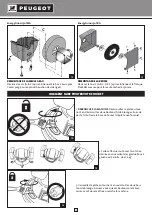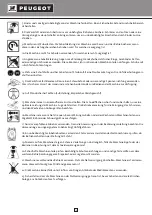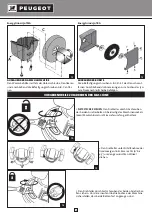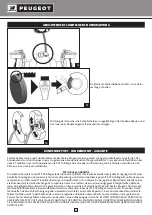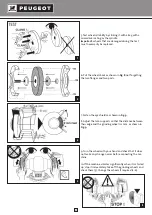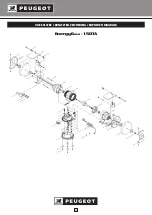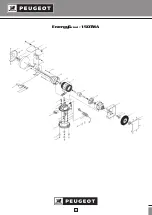
24
Waste electrical products should not be disposed of with household waste.
Please recycle where
facilities exist. Do not dispose of electrical appliances as unsorted municipal waste, use separate collection
facilities. Contact your local government for information regarding the collection systems available. If
electrical appliances are disposed of in landfills or dumps, hazardous substances can leak into the ground-
water and get into the food chain, damaging your health and wellbeing. When replacing old appliances with
new once, the retailer is legally obligated to take back your old appliance for disposal at least for free of
charge. Disposal of discarded material shall be in accordance with local environmental regulations.
EXTENSION CORDS
Only use extension cords with three conductors ending in two-pin plugs and sockets with two holes and an earth pin that
are suited to the plug of the tool. When using a power tool at a considerable distance from the power source, use an exten
-
sion cord heavy enough to carry the current that the tool will draw. An undersized extension cord will cause a drop in line
voltage, resulting in a loss of power and causing the motor to overheat. Use the chart provided below to determine the mini
-
mum wire size required in an extension cord. Only round jacketed extension listed by laboratories should be used.
Length of extension cord: up to 15 m
Wire size: 3 x 2.5 mm2
Before using an extension cord, inspect it for loose or exposed wires and cut or worn insulation. Repair or replace any dama
-
ged or worn cord immediately.
ELECTRICAL CONNECTIONS
Your machine has a precision built electric motor. It should be connected to a power supply that is 230 V, 50 Hz. If your tool
does not operate when plugged into a socket, double-check the power supply characteristics.
The noise level of the machine is measured according to standards DIN EN ISO 3744: 1995-11 and DIN EN ISO 11203: 1996-07.
The values given are emission values calculated according to applicable standards and not values relating to use in the work
-
place. Although correlation between those different emission levels does exist, this cannot be reliably used to determine
whether additional precautions are necessary. Factors with potential influence on the sound emission level in the workplace
include the length of the period of work, the size of the room and any other sources of noise (e.g. number of machines opera
-
ting, other noisy work being carried out at the same time). Acceptable exposure levels may vary from one country to another.
For all these reasons, we would advise users to wear equipment to protect their ears while using this machine.
Acoustic pressure level LpA: 63,2 dB (A)
Uncertainties equal to 3 dB (A)
Earthing consists in connecting metal masses, that are liable to come accidentally in contact with the current due to faulty
insulation in an electrical device, to an earth connection by means of a conductive wire. That earth connection, when used
with a differential circuit breaker, prevents electrical incidents. The current flows directly into the earth and the power supply
is automatically cut off.
Do not modify the supplied plug. If it cannot be put into the socket, have an appropriate socket installed by a qualified elec
-
trician.
If the earth conductor of a machine is incorrectly connected, this can lead to a risk of electric shock. The earth conductor is
contained in green insulation with a yellow line. If the power cord needs to be repaired or replaced, do not connect the earth
conductor to a live terminal.
Call in a qualified electrician or maintenance personnel if the earthing instructions are not fully understood or if in any
doubt about the correct earthing of the tool.
If the power supply cable is damaged, it should be replaced by the manufacturer, the manufacturer’s after-sales department
or similarly qualified person in order to avoid any danger. Do not use a tool if its power cord is damaged.
This tool is designed to be used with a circuit containing a power socket. It is also equipped with an earthing pin.
ENVIRONMENTAL PROTECTION
CONNECTING THE MACHINE – ELECTRICAL CONNECTIONS
NOISE INFORMATION
EARTHING INSTRUCTIONS

